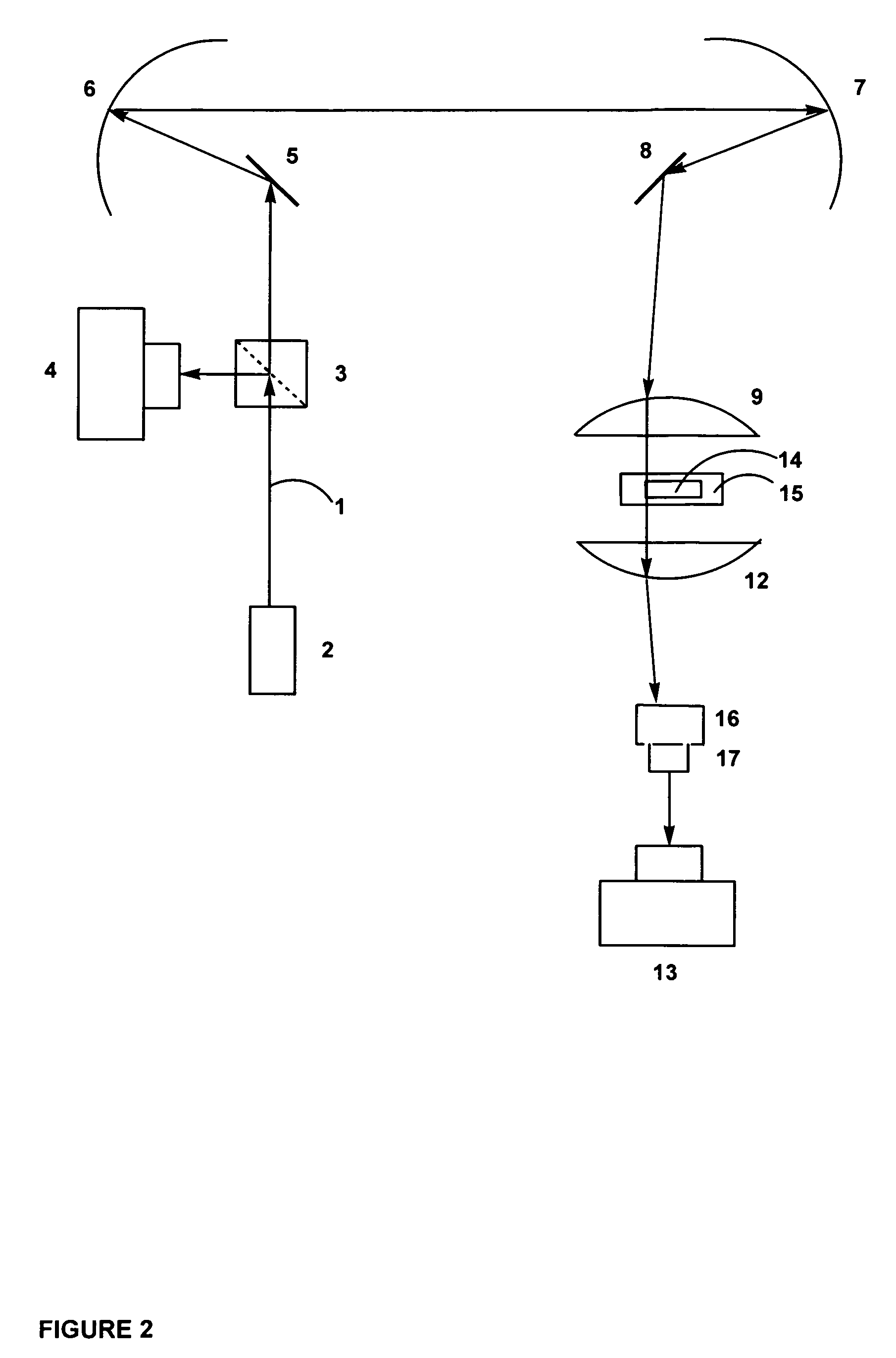Fast laser scanning optical CT apparatus
a laser scanning and optical ct technology, applied in the direction of electrical devices, instruments, photoelectric discharge tubes, etc., can solve the problems of limiting the usefulness of the inability to be sure that the dose received by the patient is that claimed by the treatment planning software, and the potential loss of resolution
- Summary
- Abstract
- Description
- Claims
- Application Information
AI Technical Summary
Benefits of technology
Problems solved by technology
Method used
Image
Examples
Embodiment Construction
[0035]The invention provides for efficient and high-resolution imaging of three-dimensional light-transmitting objects through the use of high-quality optics and a combination of precision motion control and precise alignment of carefully selected optical elements. According to the invention, galvanometer controlled rotating plane mirrors and stationary converging lenses, either with or without relay optics (consisting of, for example, a pair of paraboloidal or spherical mirrors), or using a commercially available laser “scan head”, provide a means to scan an object along two axes. The net result of the optical arrangement is that a laser- or collimated light beam executes a two-dimensional scan across the sample in directions perpendicular to its direction of propagation. One embodiment provides a Cartesian raster scan suitable for three-dimensional image reconstruction using parallel-beam back-projection techniques. Alternative embodiments include, but are not limited to, devices ...
PUM
 Login to View More
Login to View More Abstract
Description
Claims
Application Information
 Login to View More
Login to View More - R&D
- Intellectual Property
- Life Sciences
- Materials
- Tech Scout
- Unparalleled Data Quality
- Higher Quality Content
- 60% Fewer Hallucinations
Browse by: Latest US Patents, China's latest patents, Technical Efficacy Thesaurus, Application Domain, Technology Topic, Popular Technical Reports.
© 2025 PatSnap. All rights reserved.Legal|Privacy policy|Modern Slavery Act Transparency Statement|Sitemap|About US| Contact US: help@patsnap.com



